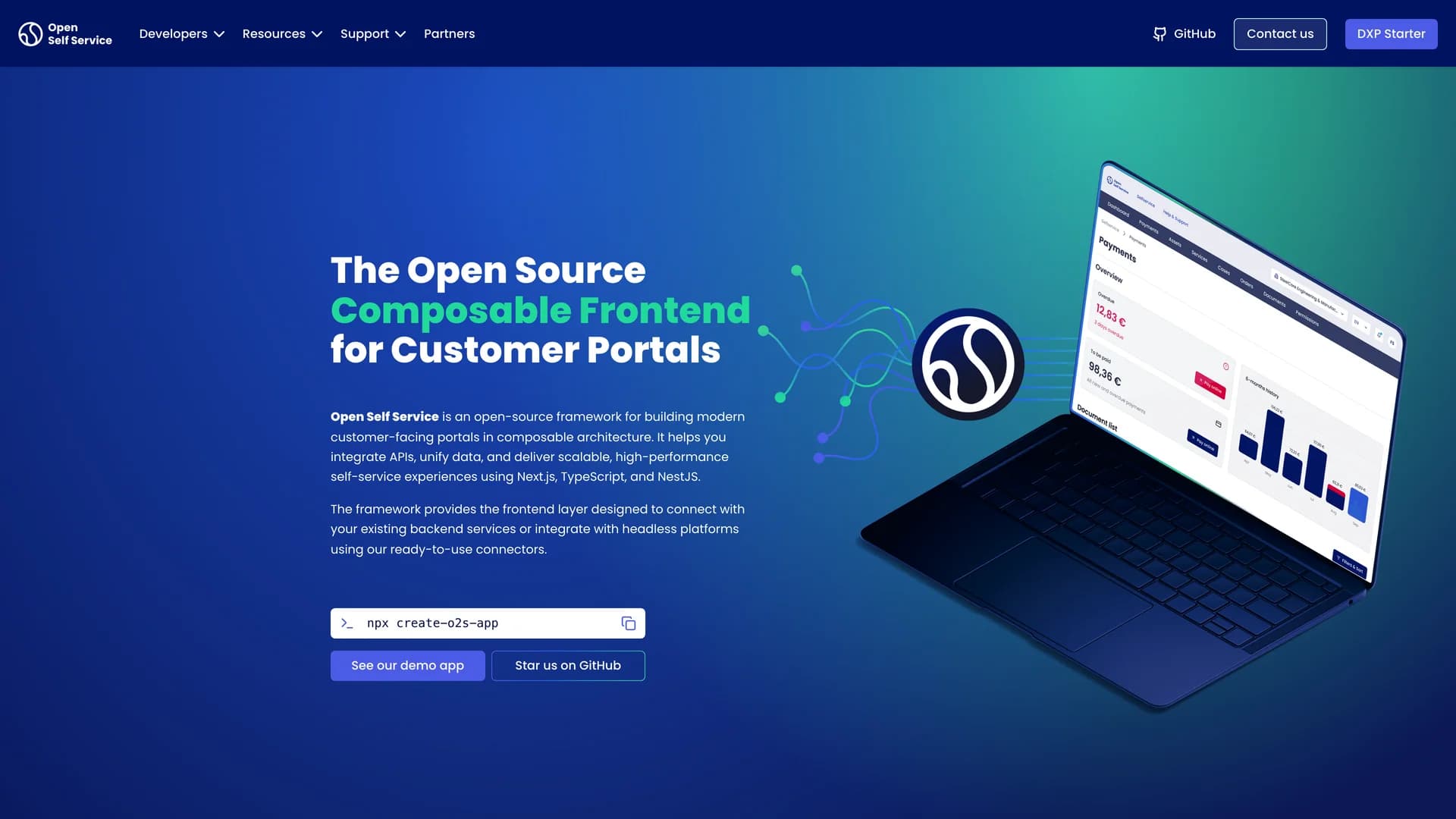Open source and free shadcn templates using Strapi
1 templates • 1 contributors • Open source & free
1
Templates
1
Authors
Available Templates (1)

OpenSelfService
Open Self Service (O2S) is an open-source development kit for building composable, future-proof customer self-service portals with API-agnostic architecture that allows you to swap backends without breaking the frontend. Maintained by Hycom, this framework combines Next.js for the frontend, NestJS for an API harmonization server, TypeScript for type safety, shadcn/ui components, and Tailwind CSS to create flexible customer portals that compose experiences by combining multiple backend capabilities from different sources. The architecture features headless and API-first design allowing any backend to be plugged in, composable backend capabilities where you mix services from different providers, pre-built integrations including StrapiCMS for content management, Auth.js for authentication, Redis for caching, and Algolia for search, extensible UI components and API integration layers, and modular design enabling easy customization without vendor lock-in. Unlike monolithic customer portal solutions that tie you to specific backends and limit flexibility, O2S treats backends as interchangeable building blocks, allowing enterprises to integrate their existing CMS, IAM, CRM, ERP, and other systems without rebuilding the entire frontend when backend providers change. This approach is invaluable for enterprises building customer portals that need to integrate with multiple legacy systems, organizations wanting to avoid vendor lock-in by maintaining backend flexibility, teams managing complex architectures with services from multiple providers, companies planning to migrate backends over time without disrupting customer experience, and developers who need a production-ready portal foundation with modern UX patterns. The framework demonstrates how to build API-agnostic frontends with proper abstraction layers, integrate multiple backend services through a unified harmonization layer, implement pre-built integrations while maintaining composability, design scalable customer portal architectures, and future-proof applications against backend technology changes. Open Self Service makes building sophisticated customer portals accessible while ensuring long-term flexibility and maintainability.